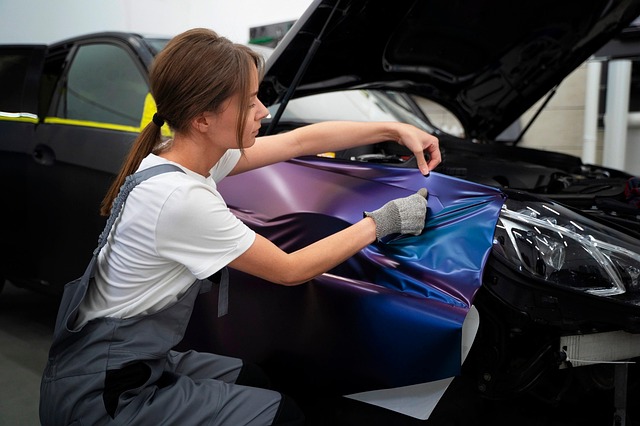Car Body Shops: Services, Repairs, and Choosing Local Options
When a car needs body work after a collision, storm damage, or everyday wear, understanding what a body shop can do helps you plan repairs and timelines. Body shops combine skill in metalwork, paint, and sometimes mechanical adjustments to restore a vehicle’s appearance and safety. This article explains common services, how estimates and insurance fit in, how auto repair and bodywork overlap, mobile repair options, and tips for choosing local services.

Car: Common body work services
A body shop typically handles dent repair, panel replacement, bumper repairs, paint refinishing, and rust repair. Technicians assess visible damage and underlying issues such as frame misalignment, which can affect safety and handling. Paint services include color matching, blending adjacent panels, and clear coat application to protect the finish. For minor dents and dings, paintless dent repair can preserve original paint while restoring shape.
Beyond surface fixes, many shops offer glass replacement, headlight restoration, and trim repair. Some body shops also perform structural measurements and frame straightening using calibrated equipment. If repairs are extensive, shops often document damage, recommend parts (OEM or aftermarket), and coordinate with collision estimators to create a comprehensive repair plan.
Vehicle: Insurance, estimates, and paperwork
When an accident involves another party or comprehensive coverage, insurance plays a central role. A body shop usually prepares a written estimate that lists labor, parts, paint, and sublet services (like frame or glass shops). Estimates may come from standardized estimating software that uses regional labor rates and parts pricing; insurers review these before approving repairs. Always request a detailed estimate and check whether it itemizes parts and labor separately.
You may choose a shop recommended by your insurer or one you find independently. If your vehicle is financed or leased, the lender or leasing company may have requirements for repairs. Keep copies of all paperwork, photos of damage before repairs, and written warranty terms from the shop. Clear documentation helps resolve disputes about scope, timeliness, and final charges.
Auto repair: Structural and mechanical overlap
While body shops focus on exterior and structural restoration, some damage requires mechanical or electrical repairs typically handled by an auto repair shop. For example, collision impacts can affect suspension components, steering geometry, engine mounts, sensors, and airbag systems. A comprehensive repair often requires collaboration between a body shop and a mechanic or dealership service center.
When selecting a repair path, confirm who will handle vehicle re-alignment, diagnostics, and any required sensor calibrations (such as ADAS — advanced driver-assistance systems). Ask whether the body shop performs those tasks in-house or subcontracts them, and whether warranties cover both bodywork and mechanical adjustments. Proper coordination reduces the risk of incomplete repairs or repeat visits.
Mobile repair: On-site and pickup options
Mobile repair services bring certain body shop capabilities to your location, which can be useful for minor dents, scratches, or hail damage. Mobile technicians often perform paintless dent removal, small paint touch-ups, bumper repairs, and interior cleaning. These services can be faster and more convenient for busy vehicle owners and may avoid the need to leave a car at a shop for several days.
Mobile repair has limits: complex structural work, extensive paint blending, or frame straightening require shop facilities and specialized equipment. Before scheduling mobile service, verify technician qualifications, insurance coverage for the work, and whether results include any warranty. For insurance claims, confirm that your insurer accepts mobile repairs and that proper documentation and photos will be supplied.
Body shop: Choosing reliable local services
Selecting a local body shop involves checking certifications, warranties, and customer feedback. Look for shops with industry certifications (for instance, manufacturer recognition or technician certifications) and written warranties on workmanship and paint. Read reviews and ask for before-and-after photos of similar repairs. A transparent shop will explain parts choices (OEM vs aftermarket), expected timelines, and the color-matching process.
Visit or contact multiple shops if possible to compare estimates, communication style, and facilities. Ask whether the shop uses computerized paint matching, calibrated frame machines, and documented quality-control checks. Confirm lead times for parts and whether the shop offers a temporary vehicle or shuttle service during extended repairs. Clear communication and documented expectations reduce misunderstandings and help ensure satisfactory results.
Conclusion
Body shops play a key role in restoring a vehicle’s appearance and structural integrity after damage. Understanding the services available, how insurance and estimates work, when mechanical repairs are needed, and what mobile options can accomplish helps you make informed choices. Careful selection of a local body shop—based on certifications, warranties, and transparent estimates—supports reliable, documented repairs and safer vehicles on the road.






